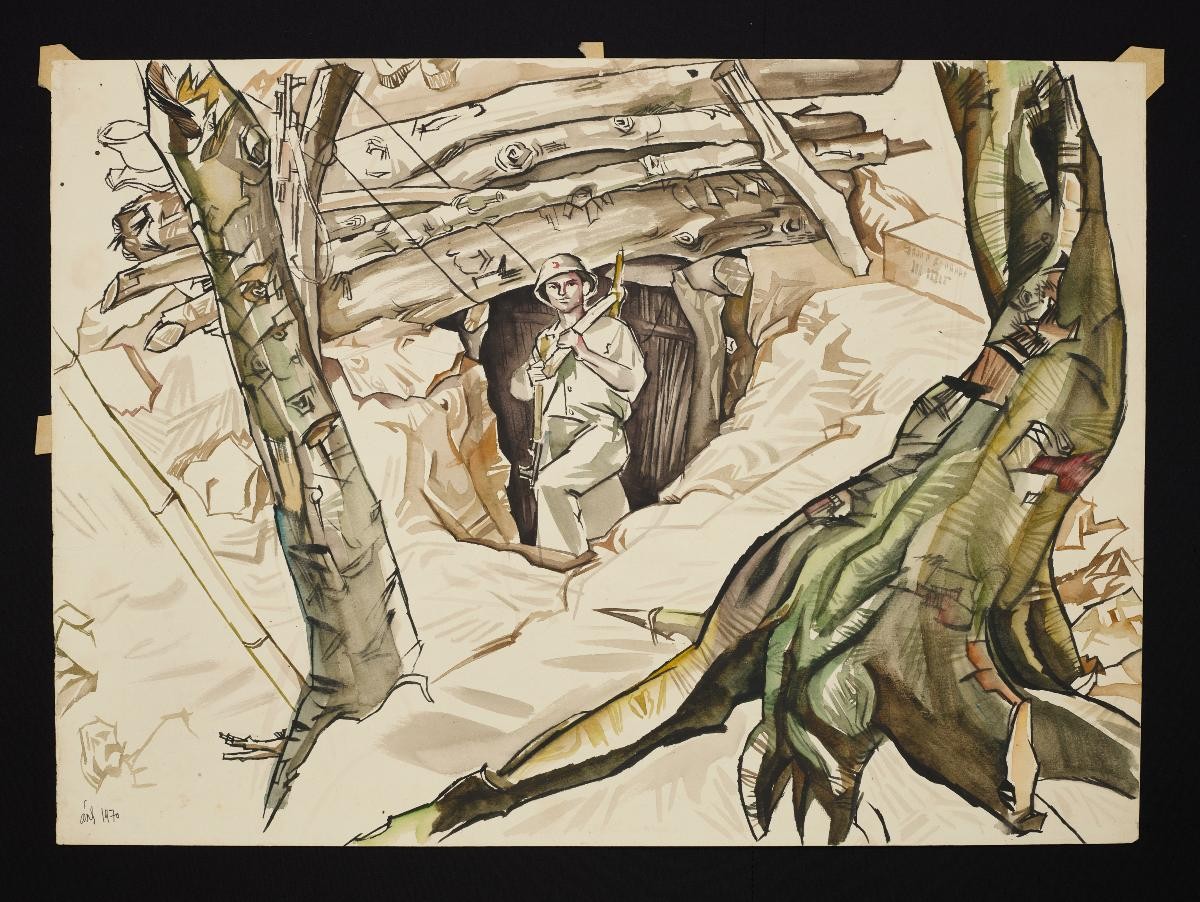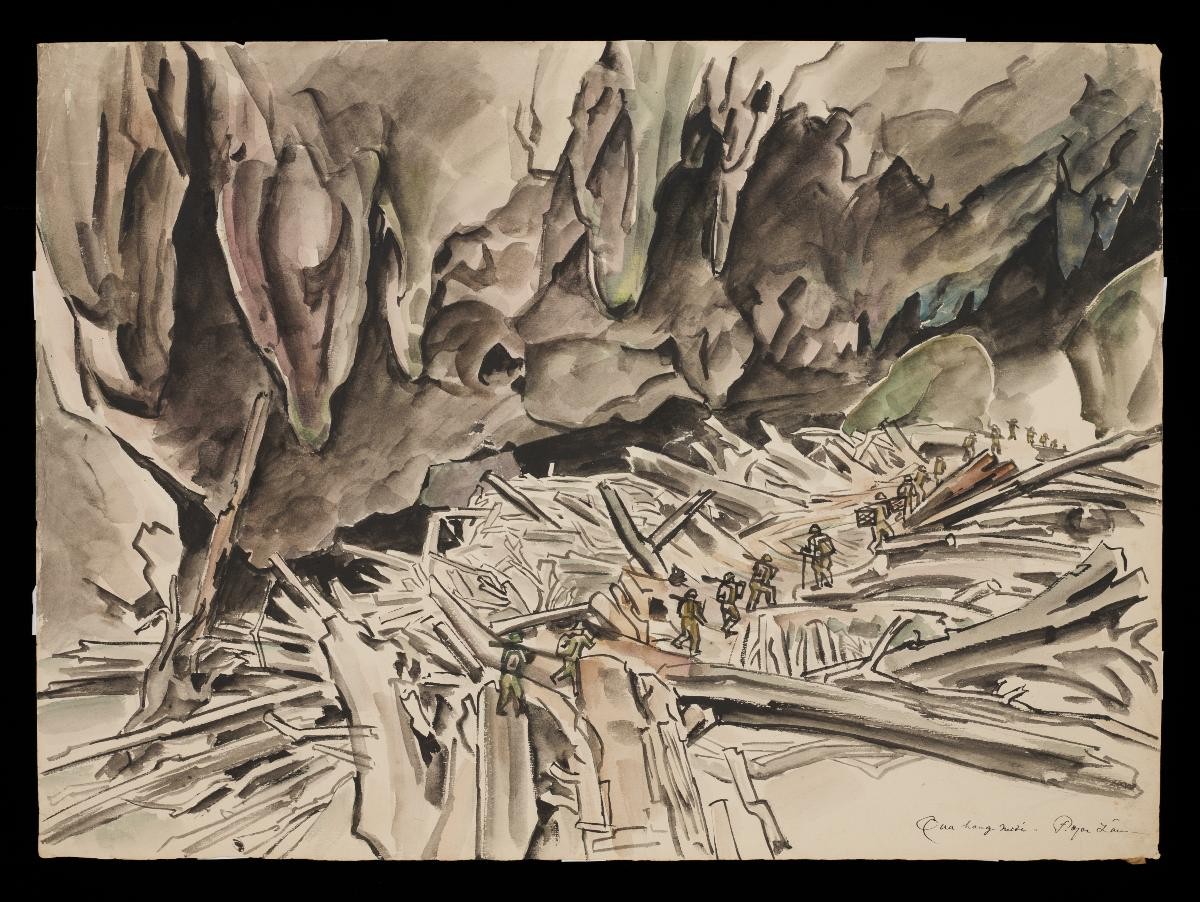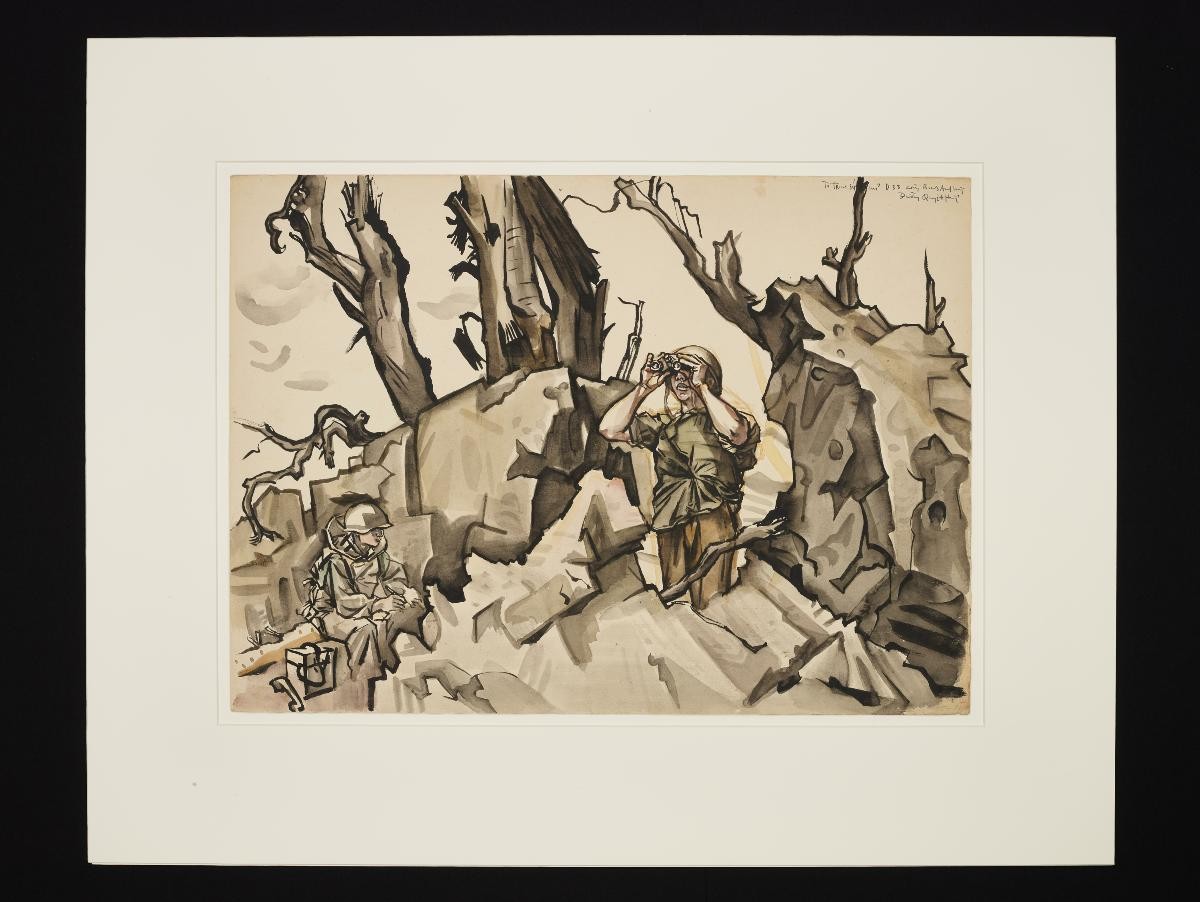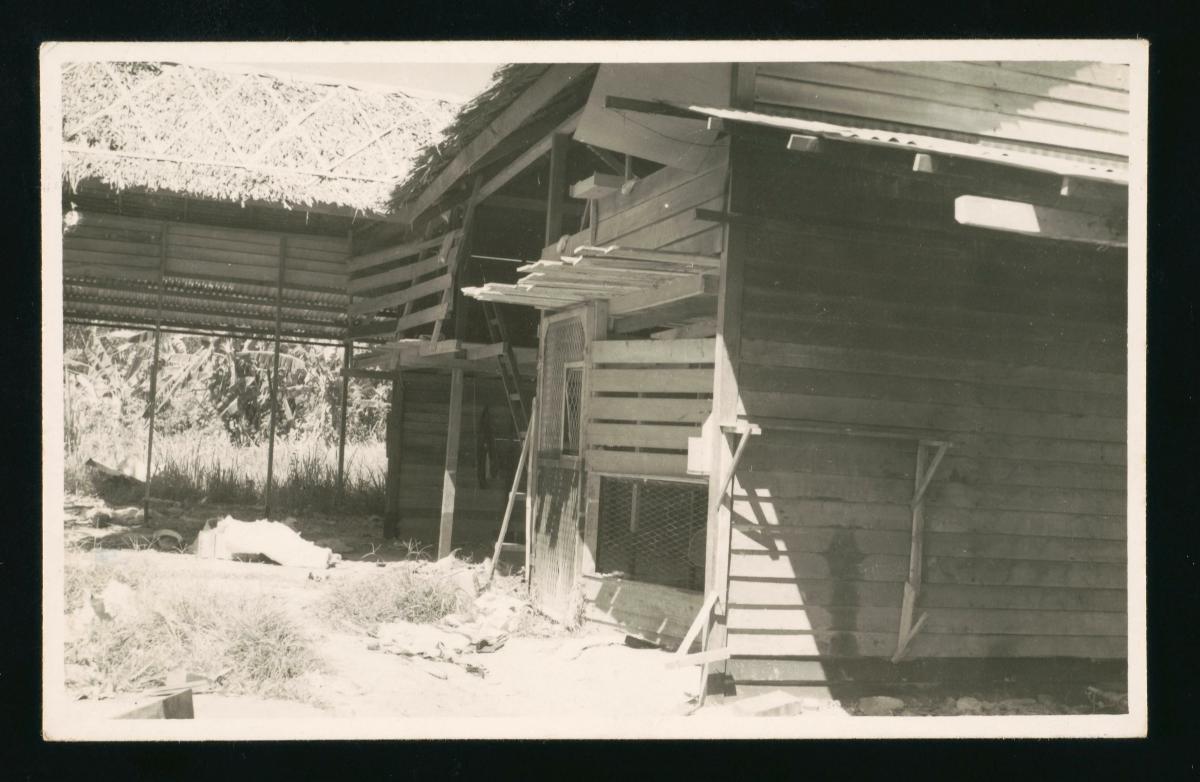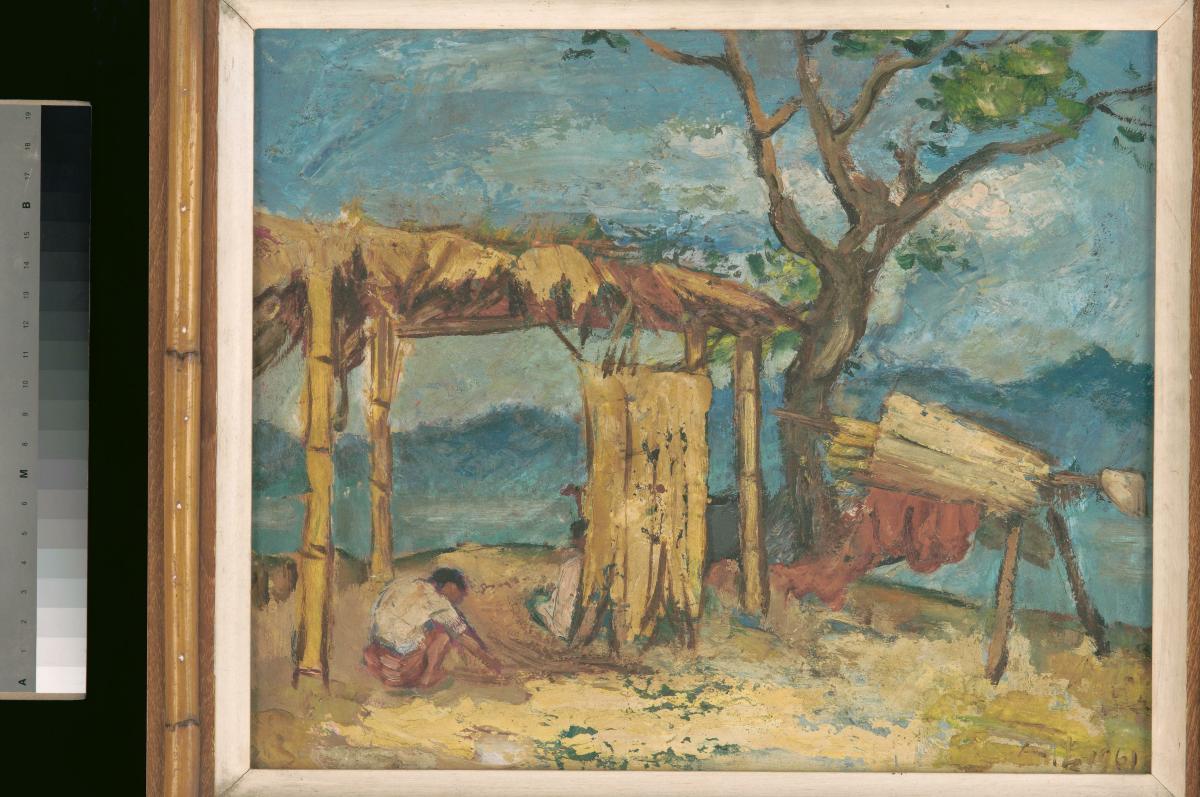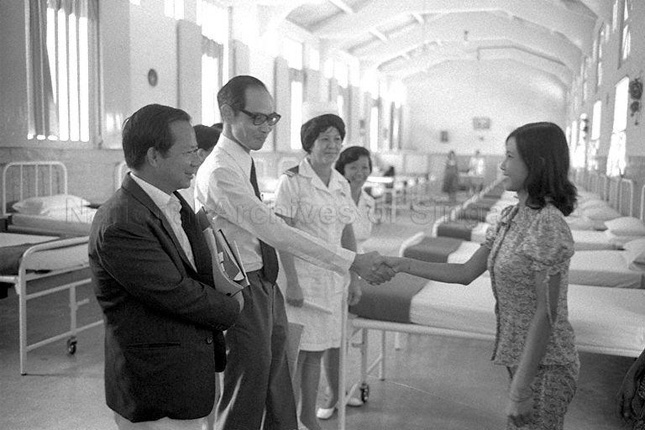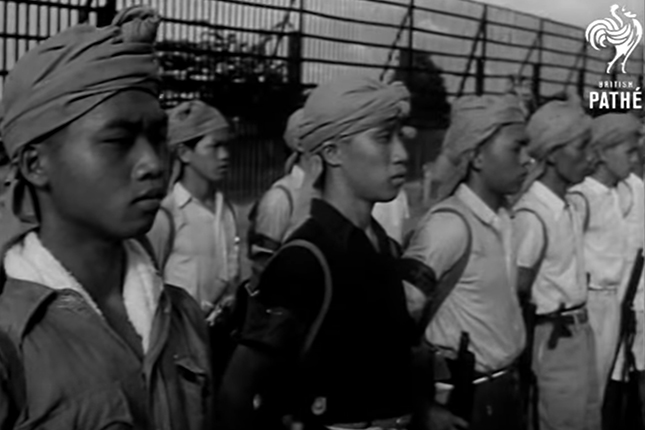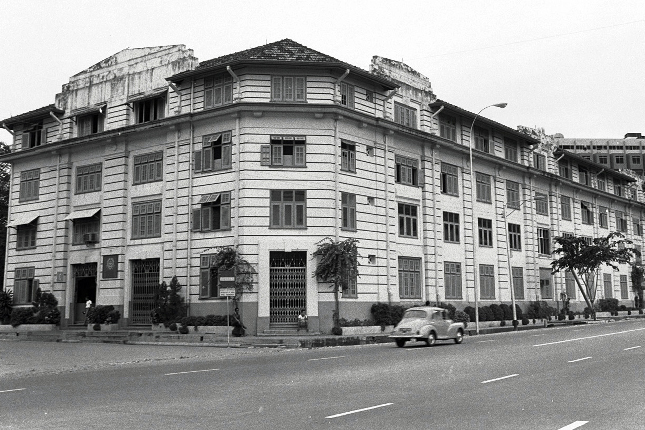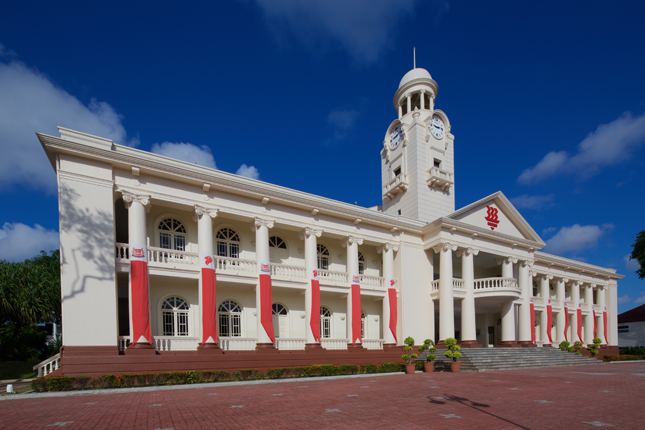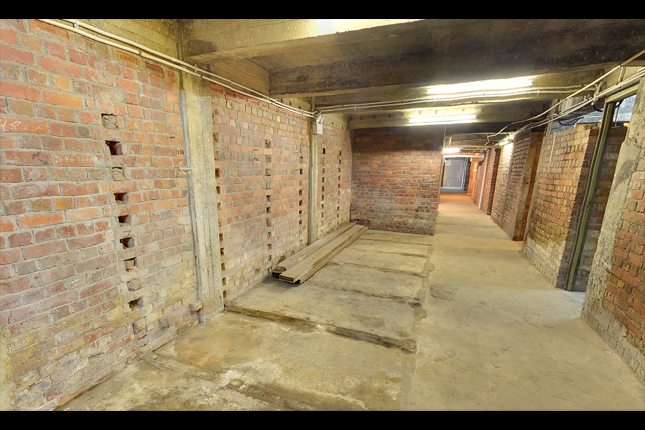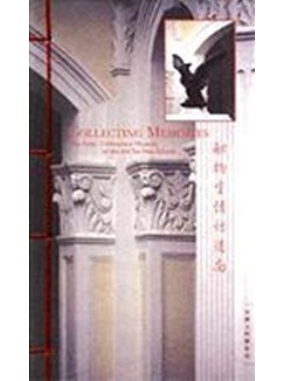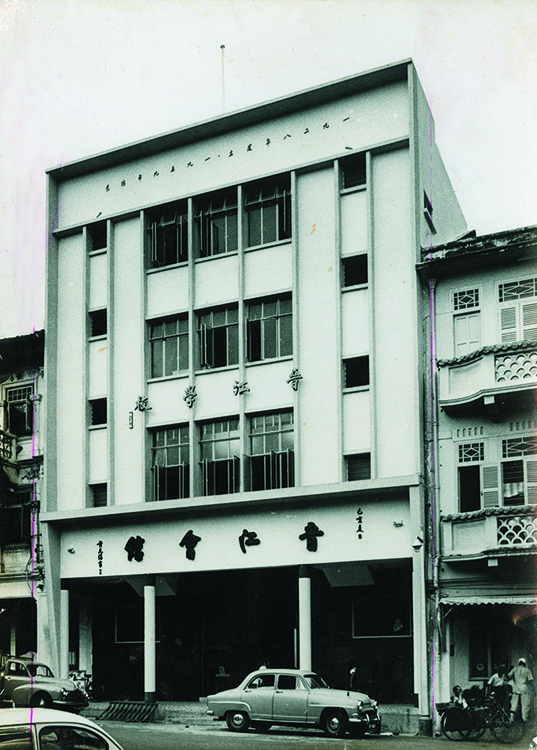Artists from Vietnam played an integral role in both the First Indochina War (1946-1954), where they fought for independence from French colonial rule, and the Second Indochina War (commonly known as the Vietnam War or the American War), which continued until 1975. Artists documented conditions for soldiers in the battlefields, as well as for civilians in the cities and the countryside. They also created propagandistic and sometimes romantic images to articulate and advocate ideological positions. In the Democratic Republic of Vietnam (DRV or North Vietnam), artists were employed by the military or the state; sometimes their works were created as personal mementoes, and sometimes they were exhibited or published during the wartime. The artwork depicts an engineer emerging from a makeshift shelter in a forest in Savannakhet, Laos. The engineer carries a pickaxe on his shoulder and an AK47. According to interviews with the artist, by firing the AK47 gun, the engineer could announce coded messages to other soldiers about what had been found in the area. While most art in the DRV followed a realistic style, as mandated by the official guidelines on art production, Bùi Quang Ánh's work nonetheless gives the impression of a defined personal style, characterised by the use of angular line and contrasting juxtapositions. The strong, almost cubistic treatment of the foreground tree indicates this stylistic tendency. An exhibition sticker on the reverse side of the work shows that this artwork was exhibited at the National Fine Art Exhibition of 1976, also called the "Anti-Fascist Exhibition". This demonstrates that wartime drawings could also be regarded as a form of art during this period.This artwork is part of a significant collection of drawings, sketches, paintings, posters and photographs in Singapore’s National Collection. These works reflect the diversity of artistic production during the First and Second Indochina Wars among artists affiliated with the communist side of the conflict. Many key figures active as war artists during this period have also had a lasting impact on the development of modern art in Vietnam and beyond.




